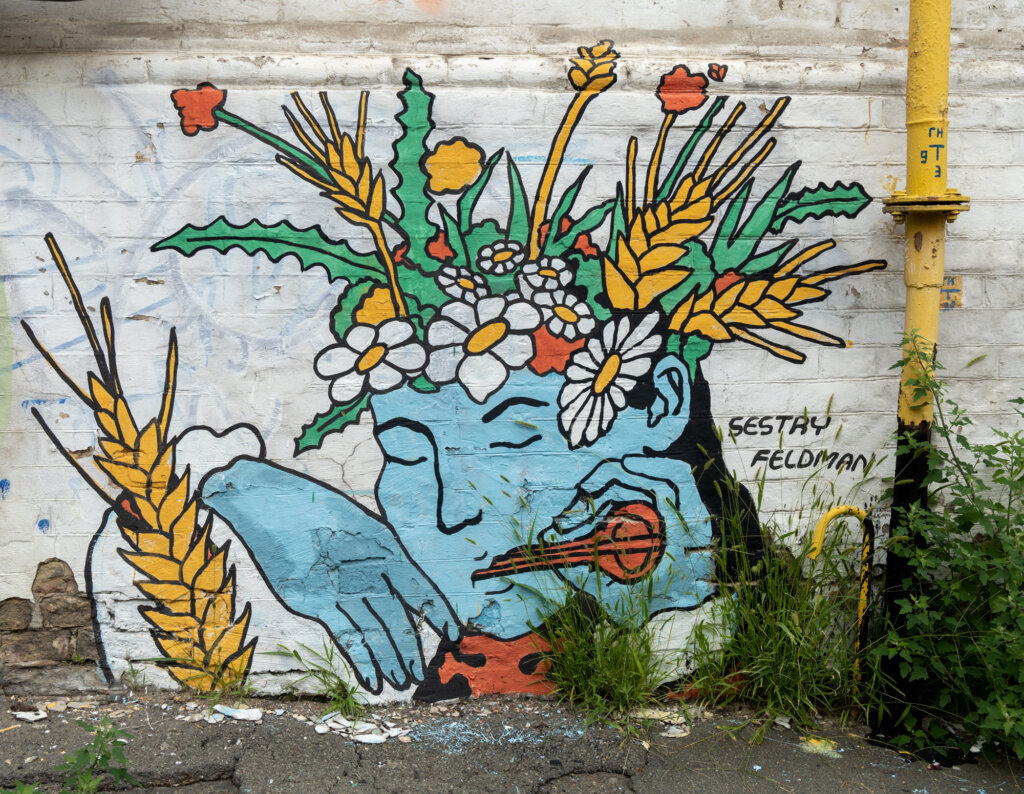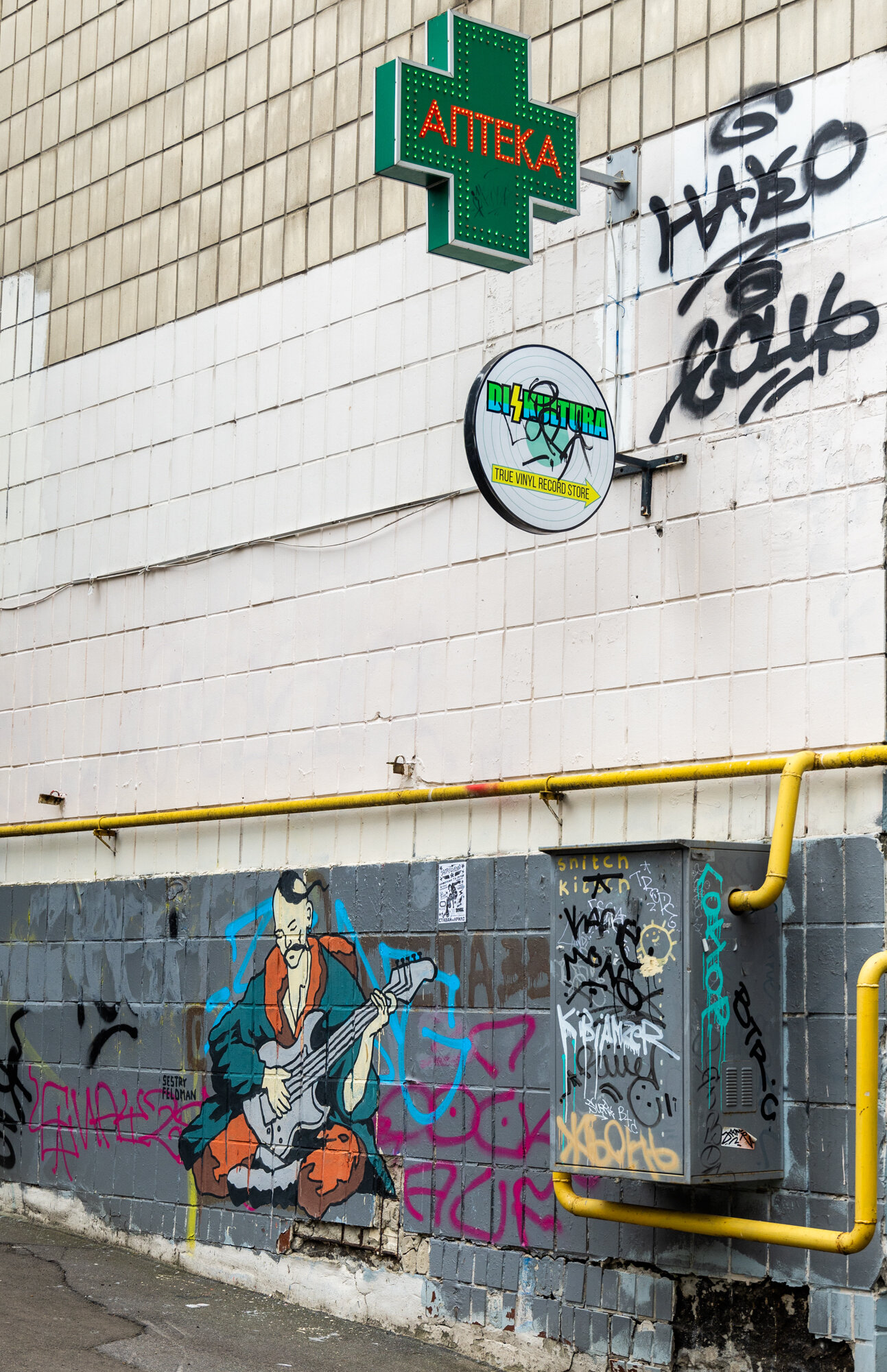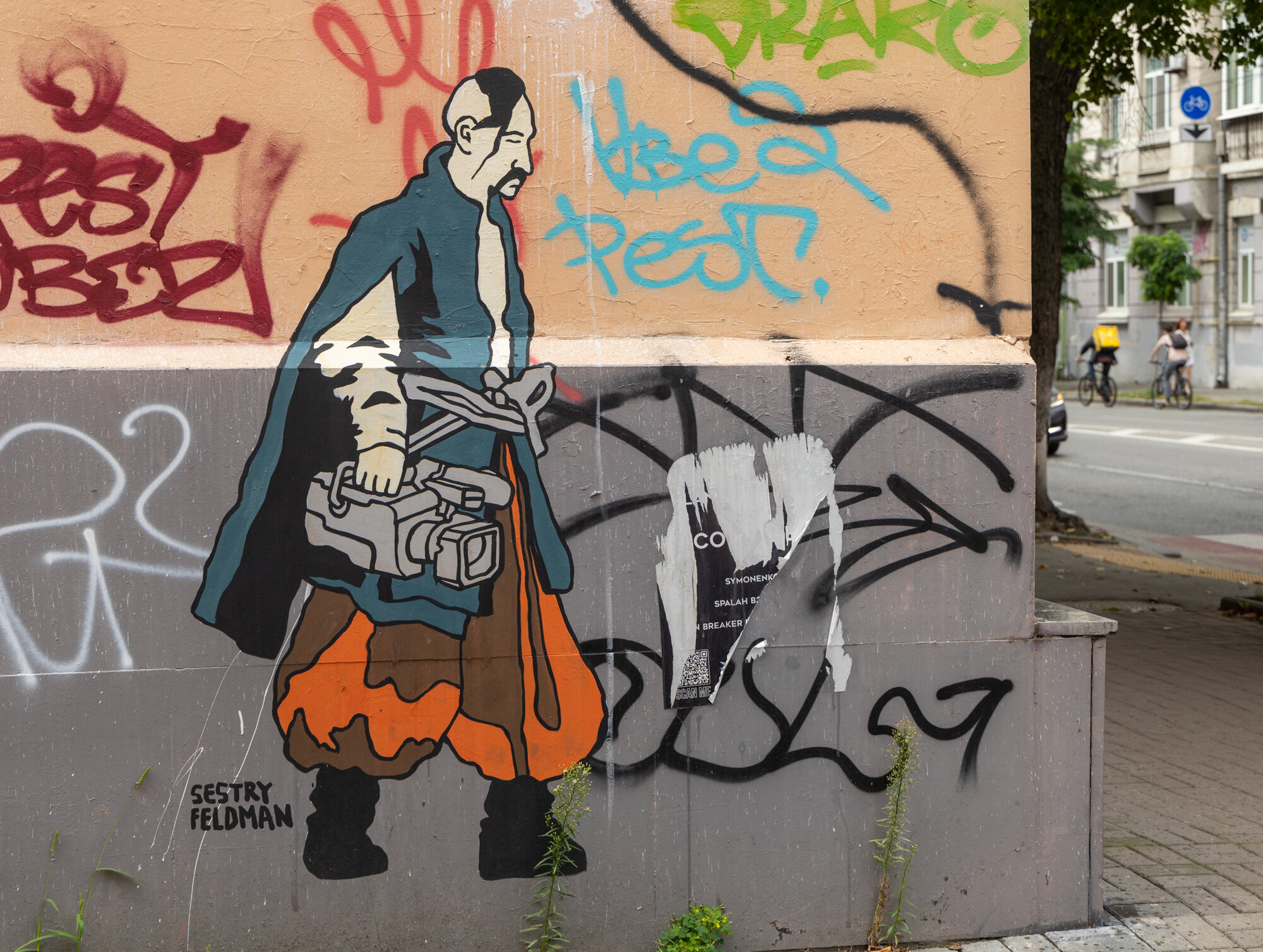Mishel and Nicol Feldman are two of Kyiv’s most well-known street artists. Taking inspiration from the socio-political world around them, the on-going war and what it says about human nature have given birth to new forms of creativity. The sisters talk to Kyiv Post about their background, what has inspired them, their works and cultural clashes with other street artists.
Graffiti art as a form of expression has been around for millennia. On Astypalaia, a Greek island in the Aegean Sea, archaeologists found evidence of graffiti some 2,500 years old – one of the oldest pieces of erotic graffiti ever discovered. Modern graffiti art is generally said to have arisen from Black and Latino neighborhoods in New York in the late 1960s and has spread around the world.
Graffiti tells us not only the history of the patterns or inscriptions themselves, but of the history and traditions of the societies in which the graffiti exists or has existed.
Modern graffiti typically conveys the voice of the streets – a form of societal reflection on the cultural, social and political events of the time in the country and the wider world. While the themes of modern graffiti are diverse, their main function is arguably a desire for dialogue.
Today, sisters Mishel and Nicol Feldman from Dnipro are two of the “voices” of Kyiv streets. They began their activities in Kyiv in 2015, but had both been fond of drawing since early childhood. When it came to answering the question “What do you want to do?” it was clear to both of them that their lives had to involve some form of artistic expression.

Sestry Feldman is the Ukrainian signature found at the sisters’ paintings. Photo by Patricia Cordell, Kyiv Post
“It was the idea of being in Kyiv and having watched the movie “Exit Through the Gift Shop” about English artist Banksy’s underground art that inspired me to take up street art,” Nicol tells Kyiv Post. She adds that it’s also about the lifestyle – “extreme with an adrenaline rush.”
The sisters’ first work, devoted to the topic of saving the planet’s resources, can be found in the underpass below European Square. However, a series of works dedicated to Tarot cards has also brought them popularity – currently comprising three decks, two of which are about Ukraine.
“The cards already contain encoded images and concepts, as this is knowledge that has been passed down between generations for over five thousand years. In the deck, you can see the same archetypes everywhere, but each nation has its own imagery. For example, in the deck about Ukraine, [Vladimir] Putin embodies the devil. Thus, for each archetype we used the apparent heroes and fools of the time,” the girls explain.
Expressions of war
Nowadays, it is difficult to remain apolitical, and the latest “voices of Kyiv” reflect aspects of the on-going war. As the sisters observe, “this can be seen in art showing a bunch of sunflowers.”
Many artists at the beginning of Russia’s full-scale invasion faced the problem of not being in the right emotional space to paint. As Mishel points out, some felt a sense of guilt due to the simultaneous desire to go to the front and fearing for their lives.
“The feeling of guilt pushes you to do something great. After the slump comes something interesting. In this situation, it helped me stop focusing on myself and learn more about my country and the wider world – to broaden my horizons,” Mishel explains.
According to the sisters, “in a way you can finally relax and be Ukrainian,” with Ukrainian feelings and passions running deep through the subconscious.

A Ukrainian motif appears in the sisters’ art 16 Kudryavska Street. Photo by Patricia Cordell, Kyiv Post
Creativity and learning
These days, ideas about the future of humanity, the logic of human actions and the psychology of the masses, dominate the Feldman sisters’ artistic works. However, artistry is not always about reflecting on their own thoughts. There is also the notion of abstraction from inspiration. The girls emphasize that these concepts can be quite different, because “in one you turn on your brain, and in the other, your heart and intuition.”
However, inspiration is a subtle thing and often comes unannounced. Nicol and Mishel often endure several hours without any ideas and sometimes can’t work for a long time. In these moments of creative crisis, they suggest that it can be better to find a form of distraction.
The girls emphasize that there can be time for creativity and a time for learning. During the latter, they point out that it’s worth gleaning new information and understanding about what is happening in your own life and making time for yourself.
“At one time, when creating patterns, I was inspired by cracked asphalt. When workers make road crack repairs, patterns emerge from the poured pitch. But often in stories, the images that emerge through art are archetypes, and usually you know this person,” Nicol says about what inspires her.
A yellow man can be seen in some of the Feldman sisters’ scenes – conveying actions in the form of a hero. Later, this yellow man moved to TV screens. At the beginning of 2022, a science fiction cartoon series from the Sestry Feldman “YoYo” street art project was released, the main character of which was the yellow man. Nicol and Mishel created the script and were involved in the drawing and editing. The Studio 31 recording studio helps with promotion and music and a second season is in the works.
Current projects and clashes
Today, the girls are involved in many volunteer projects. One of the latest is painting a school – the goal being to create favorable conditions for learning and to motivate students to learn through abstract and positive drawings.
In terms of personal projects, the Feldman sisters choose locations based on factors such as the lighting at night and the likelihood of encountering the police. However, to paint a mural, it is necessary to obtain permission through the city committee of architecture and culture, collect signatures of residents etc.
The artists have encountered the police more than once, but nothing serious has ever come of it. Typically, the officers issue a warning and there is never any mention of a fine. It often happens that the officers get into polemics with the girls on the subject of art and later let them go.
“Once, my sister was at home and I was out drawing with friends when we were stopped by policemen. They searched us and were ready to issue a fine or take us to the police station. However, one of the officers shone a light on the paint, then into my face, then on to the drawing I had just started and said: ‘You have 10 minutes – give your sister my regards,’” recalls Mishel.
However, for street artists, police officers are not the only challenge. Utility workers also want to ensure that the walls of buildings remain clean. In Ukraine, they usually paint over the drawings, while in Europe, for the most part, all houses have a special coating from which paint patterns can be more easily washed off.
“When we were in Barcelona, we painted a work at 10:00 p.m., and at 11:00 p.m. we saw a man with a power washer removing our drawing. In such moments, your ambitions become funny. You don’t ask for permission to draw, so you can’t claim that it will last forever,” the girls muse.
Streets live their own lives and are in a constant dialogue with their creators and observers. From time to time, graffiti wars can break out between different artists. This is something that the Feldman sisters have faced, with messages from other painters appearing under certain paintings, or in some cases one group completely painting over the other group’s work.
“But it’s a fun game, not a competition,” the sisters joke. “Graffiti artists have a rule that when you disrespect someone, you write “TOY” on top of the picture. It used to be unpleasant, but now things are calmer between rival artists. After all, why pay so much attention to something if you don’t like it?”






